General description
Lot specific orders are not able to be placed through the web. Contact your local sales rep for more details.
The leukocytes can be divided into two groups: mononuclear and granulocytic cells. The mononuclear cells mainly consist of lymphocytes and monocytes. The lymphocyte population consists of T cells (CD4 and CD8 positive ~75%), B cells and NK cells (~25% combined). In contrast to the granulocytes, these cells have rounded nuclei, some with indentations or folds. The mononuclear cells are involved in various ways with the body′s defense mechanisms.
1. These cells are critical components in the immune system to fight bacterial, viral infections, and function as immune surveillance network to kill tumor cells. The mononuclear cells also secrete a great variety of cytokines to regulate immune response as well as inflammation. Moreover, it has been demonstrated that the mononuclear cells may mediate various biological effects on other tissue and organs. For example, the chemokines produced by monocytes can act on adipocytes and muscles. Human Mononuclear Cells (HMNC) are often extracted from from bone marrow (BM) or peripheral blood (PB) using Ficoll-Hypaque density gradient centrifugation, a hydrophilic polysaccharide that separates layers of blood, with mononuclear cells forming a buffy coat under a layer of plasma. Generally, this buffy coat mainly contains lymphocytes and monocytes, other cell types such as cells are detected in Human Mononuclear Cell (HMNC) preparation.
2. Human Mononuclear Cells (HMNC) are widely used in research and clinical applications every day. The HMNCs are important tool for various studies in the fields of immunology (including auto-immune disorders), infectious disease, hematological malignancies, vaccine development, transplant immunology, and high-throughput screening.
3. HIV research uses them because PBMCs include CD4+ cells, which are the cells HIV infects.
4. Moreover, HMNCs have been accepted as a unique material for cancer immunotheurapy using dendritic cells or activated lymphocytes as an alternative or adjuvant to conventional therapies such as surgery, chemotherapy and radiation treatment.
5,6. Endothelial progenitor cells derived from HMNC have been used in neovascularization to improve limb ischemia
7. In cell therapy to repair ischemic and infracted myocardium.
8. Human Mononuclear Cells (HMNC) should provide a useful tool for studying various aspects of pathology and biology of the human mononuclear cells in vitro.
Human Mononuclear Cells (HMNC) are derived from human peripheral blood (HMNC-PB) using Ficoll-Hypaque density gradient centrifugation. They are cryopreserved immediately after isolation.
1. Allison, A.C. et al, Annu. Rev. Immunol. 1:361 (1983); 2. Sales, V.L. et al, Tissue Eng. 13:525 (2007); 3. Juranic, Z. et al, J. Exp. Clin. Cancer Res. 18:317 (1999); 4. Vicenzi E. et al, J. Leukoc. Biol. 68:405 (2000); 5. Steinman, R. M. et al, Int. J. Cancer 94:459 (2001); 6. Schuler, G., Cancer Immunity 3 (Suppl 1):23 (2003); 7. Kalka, C. et al, Proc. Natl. Acad. Sci. USA 97:3422 (2000); 8. Masuda, H. et al, Cardiovasc. Res. 58:390 (2003)
Cell Line Origin
Human Peripheral Blood
Application
immune surveillance and defense, cytokine and chemokine production, immunoregulation, research, clinical applications, vaccine development, transplant immunology, high-throughput screening, HIV research, cancer immunotherapy, infection fighting, study of T, B and NK cells,
Components
HMNC-PB in DMEM containing 45% FBS & 10% DMSO
Preparation Note
- Immediately after isolation, 10,000,000 HMNC-PB in DMEM containing 45% FBS & 10% DMSO
- Blood cells do not proliferate in culture
Subculture Routine
Please refer to the HMNC-PB Culture Protocol.
biological source: human peripheral blood. form: solid. packaging: pkg of 10,000,000 . cells (HMNC-PB). manufacturer/tradename: Cell Applications, Inc. growth mode: Suspension. karyotype: 2n : 46. morphology: mononuclear. technique(s): cell culture | mammalian: suitable. relevant disease(s): acquired immunodeficiency syndrome/human immunodeficiency virus (AIDS/HIV). infectious diseases. autoimmune diseases. shipped in: dry ice. storage temp.: −. 196°C. Storage Class Code: 11 - Combustible Solids. WGK: WGK 3. Flash Point(F): Not applicable. Flash Point(C): Not applicable.Shipping Information:
Dry Ice Surcharge & Ice Pack Shipments: $40
More Information: https://cenmed.com/shipping-returns
- UPC:
- 41106509
- Condition:
- New
- Availability:
- 3-5 Days
- Weight:
- 1.00 Ounces
- HazmatClass:
- No
- MPN:
- 690PB-100A
- Temperature Control Device:
- Yes












